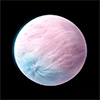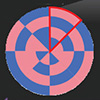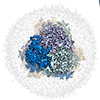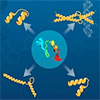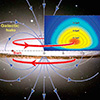May 15, 2024 (Nanowerk News) Reporting in the journal ACS Nano ("3D Printing of Glass Micro-Optics with Subwavelength Features on Optical Fiber Tips"), researchers at KTH Royal Institute of Technology in Stockholm say integrating silica glass optical devices with optical fibers enables multiple innovations, including more sensitive remote sensors for...
New dielectric composites enhance power grid components
May 14, 2024 (Nanowerk News) Researchers have made a significant leap forward in dielectric materials, with the development of a new class of composites that address critical challenges in medium and high voltage power grid components. These composites offer a trifecta of advantages – efficient electric field management, minimized energy...
WASP-193b, a giant planet with a density similar to that of cotton candy
May 14, 2024 (Nanowerk News) An international team led by researchers from the EXOTIC Laboratory of the University of Liège, in collaboration with MIT and the Astrophysics Institute in Andalusia, has just discovered WASP-193b, an extraordinarily low-density giant planet orbiting a distant Sun-like star. This new planet, located 1,200 light-years...
Breakthrough photochromic material enables high-density optical data storage with enhanced security
May 14, 2024 (Nanowerk Spotlight) In a world driven by data, the relentless growth of digital information is pushing existing storage technologies to their limits. Every day, vast amounts of data are generated, making the need for high-density, secure, and reliable storage solutions more critical than ever. Traditional optical storage...
New snail-inspired robot can climb walls
May 14, 2024 (Nanowerk News) A robot, designed to mimic the motion of a snail, has been developed by researchers at the University of Bristol. Adding to the increasing innovative new ways robots can navigate, the team, based at the Bristol Robotics Laboratory, fitted the robot with a sliding suction...
A bionanomachine for green chemistry
May 14, 2024 (Nanowerk News) Researchers at the Paul Scherrer Institute PSI have for the first time precisely characterised the enzyme styrene oxide isomerase, which can be used to produce valuable chemicals and drug precursors in an environmentally friendly manner. The study appears today in the journal Nature Chemistry ("Structural...
New toolkit makes molecular dynamics simulations more accessible
May 13, 2024 (Nanowerk News) PaCS-Toolkit—a recently developed software package that will make it straightforward for researchers to run parallel cascade selection molecular dynamics (PaCS-MD) simulations, report scientists at Tokyo Tech. This versatile software, coded with Python, helps with the setup, optimization, and running of PaCS-MD simulations in various computing...
Electron vortices in graphene detected
May 13, 2024 (Nanowerk News) Researchers at ETH Zurich have, for the first time, made visible how electrons form vortices in a material at room temperature. Their experiment used a quantum sensing microscope with an extremely high resolution. Key Takeaways In graphene, electrons behave like a liquid. This can lead...
Scientists discover huge magnetic toroids in the Milky Way halo
May 13, 2024 (Nanowerk News) The origin and evolution of cosmic magnetic fields is a long-standing unsolved question at the frontier of astronomy and astrophysics research and has been selected as one of the key areas of investigation for many major world-class radio telescopes, including the Square Kilometer Array (SKA)...
Plant virus based nanoparticles show promise against metastatic cancer in mice
May 13, 2024 (Nanowerk News) An experimental treatment made from a plant virus is effective at protecting against a broad range of metastatic cancers in mice, shows a new study from the University of California San Diego. The treatment, composed of nanoparticles fashioned from the cowpea mosaic virus – a...



